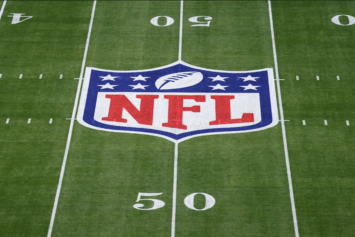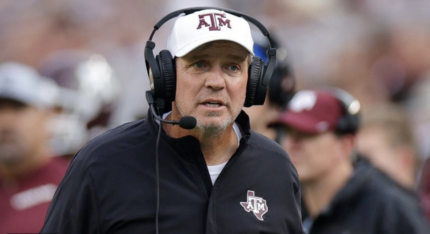It’s been almost two decades since Tyrone Willingham was fired at Notre Dame, and black coaches on the collegiate level are still dealing with the fallout from his failures.
As Week One of the college football season kicks off this weekend, it marks the 15thseason since the university’s first black head coach, of any sport, was fired.
And while at least 10 FBS programs will have a black man in charge this season, it still feels like they don’t get the benefit of the doubt when it comes to the patience that’s necessary to build a program or sustain success.
Willingham is the reason why.
African Americans have always understood that we have to be twice as good to get half of what those that don’t look like us have. And one area that proves that is the lack of black head coaches in football.
In the NFL there are only three in a league with 32 teams that’s over 70% black. Only 13 black coaches run programs on the FBS level where 130 schools play football.
And while it’s easy to look back on Willingham’s time at Notre Dame as the beginning of some progress, as there were only three black head coaches on the Division I level in 2005, his resume points to why he may be the reason why black coaches are consistently under the microscope.
In his three seasons at Notre Dame, Willingham was 21-15. After going 10-3 in his first season, things went sour as he only won five games in his second season and six in this third.
He was out, and many in Black America were pissed.
I wasn’t.
Willingham was never good enough to be the first black football coach at Notre Dame, and it’s finally time that we accept that.
In his time at Stanford, before he showed up in South Bend, Willingham was 44-36-1. He only managed to win more than 8 games twice, going 8-4 in 1999 and 9-3 in 2001. After Notre Dame, Willingham wound up at the University at Washington.
“That is honestly significant,” said Willingham when asked about being the first black coach to be rehired at a big-time school at his 2004 introductory press conference at Washington. “Because I think when you’re on a landscape where there have been truly limited opportunities, for one to be able to be back in the system is a very positive step.”
Willingham was 2-9 in his first season at Washington, with an 11-37 record in his four-year tenure, that included going 0-12 in 2008.
“I am proud to be African-American. But at the same time we want to get to the point in our culture where that is not the focus,” said Willingham in that same press conference. “Where it’s really the body of work that a man does, and I’m looking forward to increasing my body of work. Because I think there have been some good things in that body.
The question that led to that answer from Willingham was one asked about if he was tired of being the spokesman for black head coaches at that time.
Because in a sense, he was.
“When I was coming out of high school I wanted to play for Tyrone Willingham because he was a black coach,” said Reggie Bush back in June during the NFL and Black College Football Hall of Fame’s inaugural quarterback coaching summit.
“It had nothing to do with Stanford or when he left to go to Notre Dame, it was because I wanted to play for a black coach. One of my coaches at USC, who I attribute to one of the reasons why I won the Heisman Trophy, was Todd McNair who is a black coach.”
While Willingham was a symbol of hope and an example of progress, he also became a barometer. And if we were going to see more black coaches get a shot on the sport’s biggest stage, he needed to succeed.
For his career, Willingham was 76-88-1. He lost more games than he won.
We’re supposed to be two times better, not mediocre.
Florida State’s Willie Taggart is one of those coaches that can’t afford to be mediocre, as he’s already on the hot seat coming into only his second season on the job.

“There’s definitely pressure already, and people were calling for him to be fired midway through his first season. One of several headlines during his first offseason was an FSU fan calling for him to be lynched,” said Chaunte’l Powell, who covers FSU for the Orlando Sentinel, to The Shadow League.
On top of dealing with overt racism, Taggart had to kick his starting quarterback (Deondre Francois) off the team, as the Seminoles missed a bowl game for the first time in 36 years after going 5-7. It was the first time Florida State had a losing season since 1976.
Taggart’s not alone, though.
After being viewed as a rising star on the collegiate level at Houston and Texas A&M, things started cooling off for Kevin Sumlin as soon as Johnny Manziel headed to the NFL.

After taking over at Arizona last season, and finishing with a 5-7 record, Sumlin and the Wildcats suffered a Week Zero loss against Hawaii last weekend.
We’ve also watched as Charlie Strong has faded into the background after going 23-3 in his last two seasons at Louisville. However, it was a different world when he took over at Texas, as he compiled a 16-21 record with the Longhorns. Strong is entering in his third season at USF and has compiled a 17-8 record.
On the other end of the spectrum, black coaches like James Franklin (Penn State), Dino Babers (Syracuse), and Herm Edwards (Arizona State), have found a way to either sustain success, gain notoriety, or are proving that they’ve still got it.
In 1979, Willie Jeffries became the first black head coach at a Division I school when he took over at Wichita State.
Forty years later, that number has grown to 13.
Fifteen years after Willingham was fired at Notre Dame, black coaches are getting more opportunities, but shorter windows of time to prove themselves.
That’s on Willingham.
Some will always view his hiring as progress, while I believe it was a wasted opportunity.
Because if Tyrone Willingham would have been better at his job, then black coaches would be much further along in their fight for equality.



